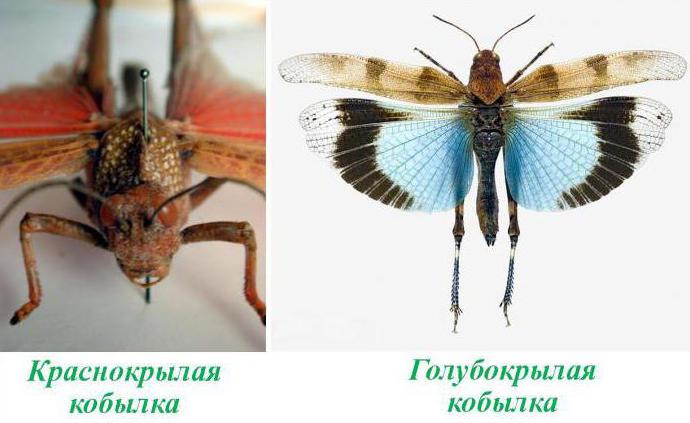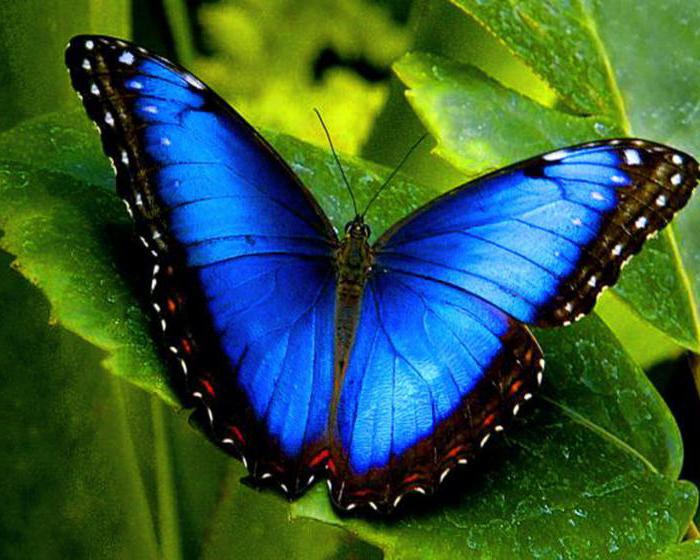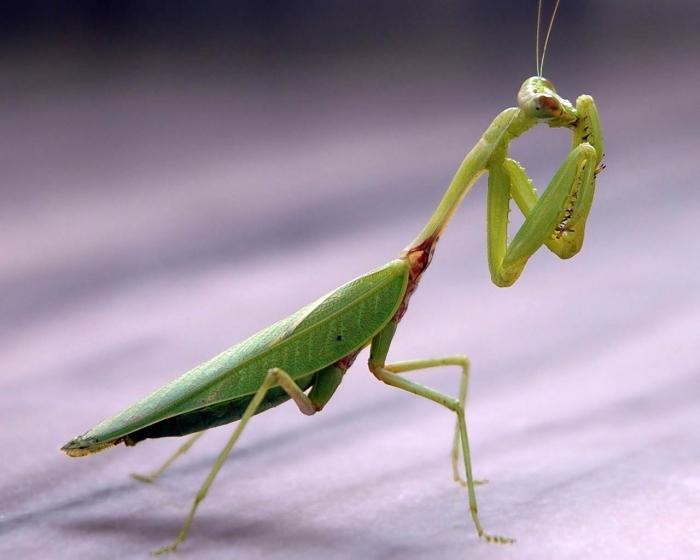Mare - an insect of the locust family
Mare - an insect from the squad. Orthopterans of the superfamily Locusts. Their closest relatives are grasshoppers and crickets.
Appearance of the larvae
To date, more than 3,800 species of these insects are known. Only in Russia there are more than six hundred species.
The mare is an insect very similar to a grasshopper. It has the same arrangement of hind legs: with a knee high above the trunk. On the back and at the filly, and the grasshoppers are composed of rigid elytra. And on the head of both types of insects are antennae antennae. Even the mackerel chatter almost like grasshoppers, only much louder!
In fact, it is difficult for an ignorant person to determine at first glance who is in front of him. Very similar grasshopper and filly (insect). The photo of both only confirms this.

But nevertheless, there are differences. Only need to carefully look closely. Basically, they are due to the fact that insects are absolutely different lifestyle.
Feeding the larvae
Among a clear warm day can oftenscare the grass out of a flock of insects that look like grasshoppers. But we can say with confidence that these are locusts. After all, grasshoppers are mostly nocturnal, and in the afternoon they hide somewhere. Only with the onset of darkness these predators go hunting.
A mare (insect) eats vegetation. Therefore, she does not need to wait for the night. And it should be noted that this herbivorous insect easily adapts to eating any plants: their leaves, seeds, fruits, and in some cases, stems.
The damage inflicted by filths to agriculture
Many believe that the filly is quite harmless. After all, although they belong to locusts, they are solitary insects. However, in 1939, KN Filatov, senior research associate of the Chelyabinsk support center of the All-Union Institute of Plant Protection, compiled a report on the dynamics of non-staggered locusts, that is, filly.

His research has proven how much the fillycan be dangerous for agriculture. According to documentary data, in 1883-1892 these voracious insects regularly destroyed crops in huge areas in the Kurgan district. This was a real calamity for the peasants. And it was not until 1892 that the people went all out on a manual hunt. With the help of special pologs, they managed to catch 155 951 pood of filly!
Local historians say that in 1894, whenthe last insect was buried in the ground, the owner of the treacle factory Balakshin in honor of this event erected a monument at his own expense. Unfortunately, to this day it has not survived.
Fighting fries
Noticing in his garden or in the garden thata malicious insect, you should try to reduce the number of feces by frequent sprinkling. Increased air humidity has a negative effect on their reproduction.
Treatment of plants with 3% solution of Bordeaux liquid helps to get rid of the filly. Eating plants that have been sprinkled with poison, insects die after 1-3 days.

To the next year, the invasion of feces is notresumed, it is necessary to mow in autumn all the plants from the roadside, deep plowing the ground and flutter. This will destroy the eggs of the filly laid in the ground.
There is another way - to dilute on your siteurchins. That's for whom the filly and other pests of gardens and vegetable gardens in joy! At the same time, these prickly predators will destroy slugs and mice along with marets, if they decide to settle on the site.
External differences of the filly from grasshoppers
From the above, it is clear why one can not be confusedthese insects. After all, grasshoppers eat larvae and harmful insects, benefiting man. And the filly, on the contrary, is itself a pest, destroying the crop. Because it is so important to know how they can be distinguished in appearance.
Compared to a grasshopper, the filly is an insect with a slow-moving head. Her muzzle is blunt, with powerful jaws.

It is known that grasshoppers are classified as suborderLong-nosed, and the filly - to short-hair. This is understandable. After all, the filly does not have to find a victim with their help. She does not need to hunt for food, tracking down her prey.
The mare is an insect that has an oblong abdomen, longer than a grasshopper's. This is due to the fact that the amount of food that it has to digest is quite large.
The front feet serve the filly only as asupport, while the grasshopper with their help catches and holds the victim. Therefore, in the herbivore insect, these limbs are weaker and shorter. Less developed in the fils and hind legs. Therefore, her jumps are not as distant as the grasshopper's.
The females of these insects have more pronounceddifferences. A rather large sword-shaped ovipositor is located behind the female grasshopper. The filly is short and almost invisible to the human eye. She lays eggs right in the soil.
Organs of hearing in larvae
Not everyone knows that many insects hearnot at all ears, as is customary in mammals, birds and reptiles. For example, grasshoppers use their legs for this purpose. Hearing organs are located on the shins of the front legs.

The moths hid their ears completely. Their auditory organs are located at the sides of the belly, in the region of the first segment.
The organs for reproducing sound from fossils
In the hot noon in the fields and meadows there is a loud chirping. Usually people smile when they hear these sounds, and they say: "That's how the grasshoppers cracked!" But this is a wrong judgment!
Grasshoppers are by nature day quiet. Therefore, it is impossible to hear them. In the middle of the day, either the locusts or the filly shredded. And, only males do this. In this "musical" way they attract females to themselves. There is also a second explanation for the loud chatter of male males. With their sounds, they warn other males that the given territory is already occupied.
They produce their sounds of the filly, rubbing the tubercles located on the hind legs of the hind legs, about the vein under the elytra.
Coloring of larvae
It is interesting that the color of locusts dependsnot from the view, but from the environment. If there is a lot of bright green around the growing insect, then a green filly will turn out. An insect that lives in the steppe, where there are fewer greenery, but a lot of brown soil on which one has to move, will turn gray-brown.

Although the lower wings of some species have a bright color. For example, in the blue-winged and red-winged filly, in addition to the protective color of the elytra, there is also a way of protecting against enemies.

Anticipating the impending danger, they jump up sharply with a noise, revealing their bright wings. And after a moment they go down again. From the outside it looks bright flashes of fireworks.








